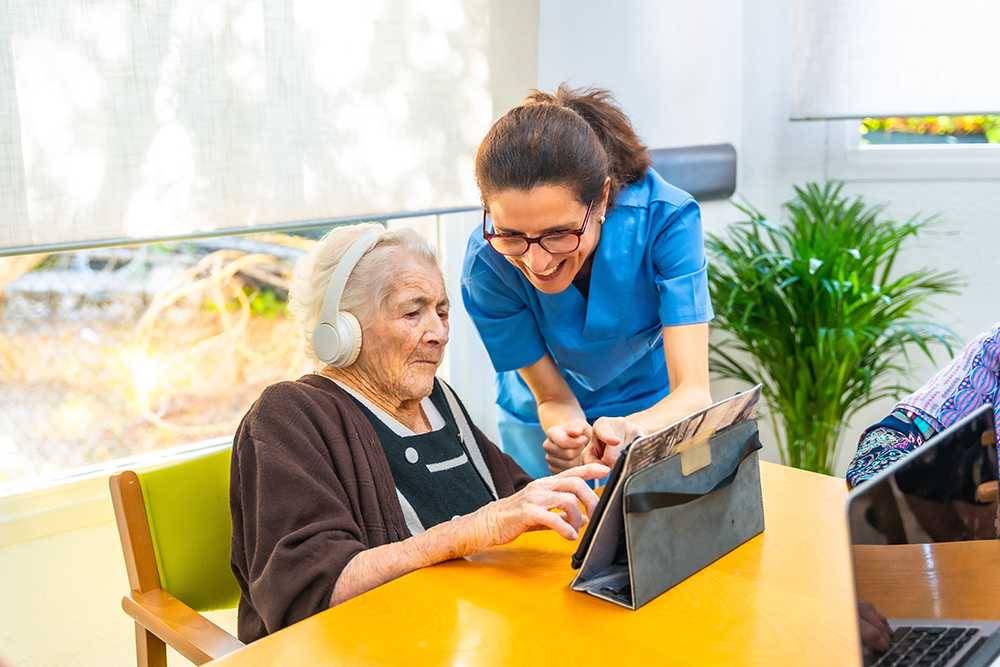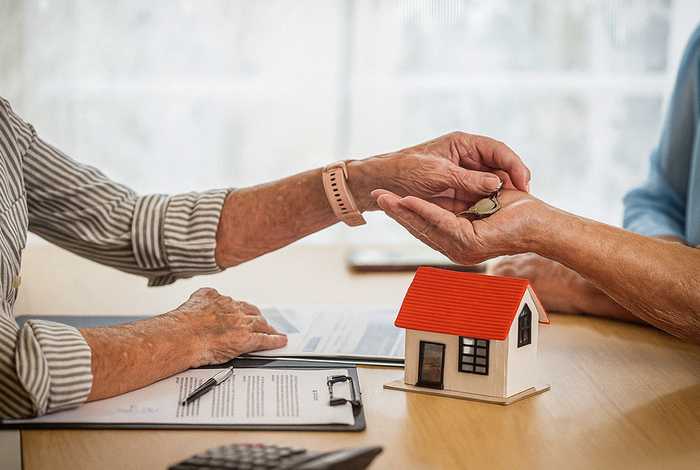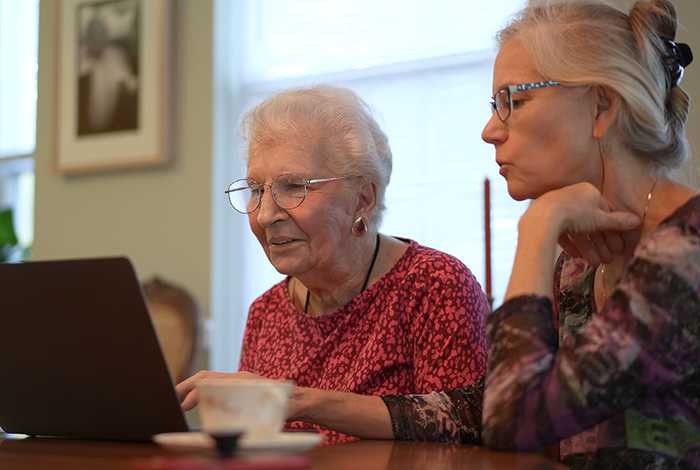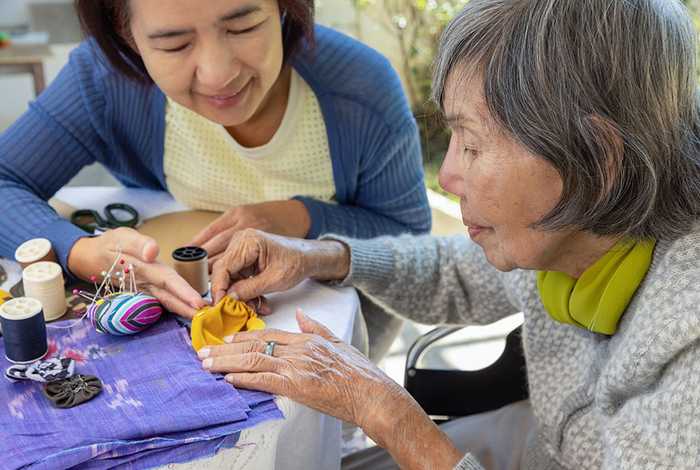Posted by Janine Griffiths
What is assisted technology in care homes?

Technology seems to be evolving faster than we can keep up. With AI-powered tools entering everything from our phones to our kitchens, it’s easy to feel like the world is speeding up while we're just trying to keep pace.
When it comes to care - something so deeply personal and human, it might feel odd to imagine technology playing any kind of meaningful role, especially when you’re not familiar with it. But the truth is, some of the most thoughtful innovations are happening quietly behind the scenes in care homes, designed not to replace people but to support them.
If you’re funding your own care, every decision matters. You want comfort, dignity, and quality - but also value. That’s where assisted technology in care homes comes in. It's not cold or clinical. It's the kind of smart support that makes daily life a little safer, a little smoother, and a lot more empowering.
This guide will walk you through what it is, how it works, and why it might be something worth asking about when you're choosing a care home.
Defining assisted technology in care homes
Let’s keep things simple. Assisted technology refers to tools or systems designed to make life safer, easier, and more independent for people receiving care. In a care home setting, that could mean anything from clever sensors that detect movement to gentle lighting that switches on automatically when someone gets out of bed. It can include reminders for medication, discreet fall alerts, or voice-activated devices that respond without the need to press a single button.
What makes assisted technology in care homes different from everyday gadgets is its purpose. It isn’t there for entertainment or convenience, it’s there to support and to help residents feel more in control of their day-to-day lives.
It’s also important to say this: it doesn’t take the place of carers. It works quietly alongside them, enhancing the care they give and allowing them to focus even more on the personal, human side of support.
The role of assisted technology in everyday care
Care should feel natural. It should never get in the way of your routine, your comfort, or your sense of self. That’s why assisted technology in care homes is designed to work gently in the background, supporting your day without demanding your attention. You might not even notice it’s there but it’s often doing more than you think.
Whether it's preventing trips and falls, alerting staff to changes in movement, or monitoring your health in real time, this kind of technology is built to spot things early and act fast when needed. It helps with mobility, too, allowing more freedom to move around with less effort or risk.
When it comes to wellbeing, it doesn’t just focus on physical needs. It can soothe the senses, help you stay connected to what matters, and offer gentle reminders that keep you feeling steady and confident.
Why it matters for self-funders
If you’re paying for care yourself, the stakes feel even higher. Every decision carries more weight. Naturally, you want to know that the care you're choosing offers the best value for the most affordable price, not just in cost, but in quality of life and those little added extras that make your life seem more luxurious. That’s where assisted technology in care homes can make a real difference.
For those supporting a loved one privately, knowing that technology is in place around the clock can be deeply reassuring.
[While some homes with this kind of support might come at a slightly higher cost, that extra investment can reflect better safety and responsiveness, plus a more personalised level of care. In many cases, it’s not just about what you're paying, it's about what you're truly getting in return.
How to know if a care home uses assisted technology
Not every care home uses technology in the same way. Some may embrace it fully, while others take a more traditional approach. If assisted technology in care homes feels important to you, the key is knowing what to ask.
Start by finding out what kind of systems are actually in place. Is there technology that helps keep residents safe and independent? Are there tools that help staff respond quickly if something goes wrong? It’s also worth asking how well the staff are trained to use these systems. After all, the best technology is only as good as the people using it.
Another good sign is whether the technology is used as part of personalised care planning. This shows it’s not just an add-on, but something that’s thoughtfully integrated into everyday life.
Myths and misunderstandings
It’s easy to hear the word "technology" and imagine cold machines giving instructions over the intercom or robots replacing human carers. However, that’s one of the biggest myths. In truth, assisted technology in care homes is not about cutting corners or reducing contact. It’s there to help carers do what they do best, with more time, better insight, and less guesswork.
For example, it can be as simple as an alert system that is designed to let carers know when an elderly resident needs a little extra help, or a sensor designed to track movements and prevent dementia patients getting lost.
Another common belief is that only the most high-end or luxury care homes offer this kind of support. While it may have started that way, it’s now becoming far more common across all kinds of settings, from small family-run homes to larger care communities.
And then there’s the worry about privacy. Most systems are designed with dignity at their heart. They work discreetly, often in the background, without interfering or intruding.
At its best, assisted technology isn’t a replacement for compassionate care. It’s what helps make compassionate care even better.
Looking for a care provider that uses assisted technology?
Autumna’s care home directory is designed to make your search as straightforward as possible.
Start by entering your care requirements and location. Our filters help you fine-tune your results so you can focus on homes that tick your specific boxes. Whether you are after a provider that offers digital care plans, stairlifts, or other tech-enhanced features, Autumna can help you find what you need.
Want personalised suggestions without the legwork? You can also use Autumna’s own assisted technology – our shortlisting tool. It asks a few easy questions and gives you a tailored shortlist in moments.
You can also call our team on 01892 335 330 if you’d prefer to talk it through with someone who understands the system inside out.
Receive a Free Care Home Shortlist!
Let our expert team of advisers get your search off to a great start.
Tell us a little about your needs and we'll send you a bespoke shortlist of care homes! Click the button below to begin, it takes just a few minutes.
Other articles to read
From the blog

Older Persons Care Advice
Ultimate guide to jointly owned property and care home fees
September 26th, 2025
Understand jointly owned property and care home fees, how assessments work, and steps to protect your finances and plan ahead with confidence.

Older Persons Care Advice
What are the pros and cons of care homes?
September 26th, 2025
Weigh the pros and cons of care homes to make the right choice for you or a loved one. Discover benefits, challenges, and tips for finding the best fit.

Older Persons Care Advice
Person centred care and dementia: A guide for families
September 23rd, 2025
Discover how person centred care and dementia support go hand in hand. Learn practical tips, expert insight, and guidance for families seeking the best care.
Frequently Asked Questions
Yes. In fact, assisted technology often enhances personalised care. It gives staff more time and better information to tailor their support to your specific needs, rather than replacing any part of it.
Not necessarily. Technology is usually there to support the team, not reduce it. In most care homes, it’s used to improve response times and allow staff to focus more on one-to-one, human interaction.
Yes, many systems are specifically designed with dementia care in mind. They can help reduce confusion, keep people safe, and support a calm, reassuring environment without being intrusive.
In most homes, yes. Technology use is usually discussed as part of your care plan, and you can express preferences or ask questions about what you’re comfortable with.
The UK's largest & most detailed directory of elderly care and retirement living options
10,318
Care Homes
11,950
Home Care Services
1,657
Live-in Care Services
1,756
Retirement Living Developments
Autumna is the UK's largest and most comprehensive later-life living & elderly care directory. Our detailed search facility and team of expert advisors can help you find the best care homes, nursing homes, retirement homes, retirement villages, home care, and live-in care services for you or your loved one's needs. Our website is free to use, we are proudly independent, and we never take referral fees.






